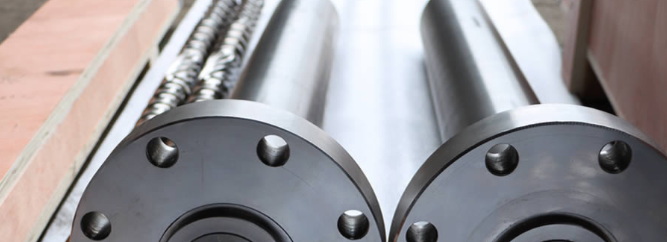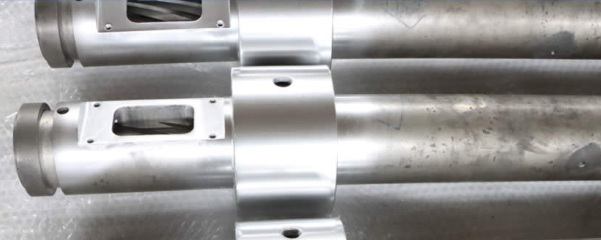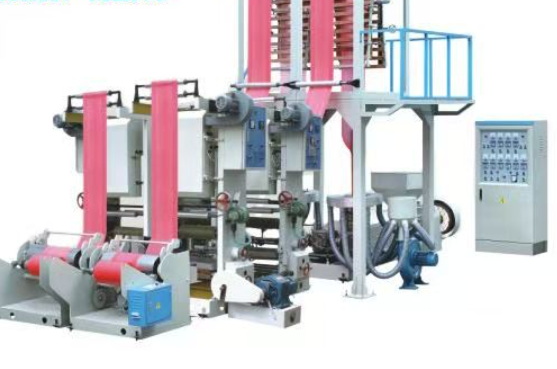Content Menu
● Introduction to Extrusion Machinery
>> Key Components of Extrusion Machinery
● Applications of Extrusion Machinery in Medical Fields
>> Steps Involved in the Extrusion Process
● Benefits of Extrusion Machinery for Medical Applications
● Innovations in Extrusion Solutions for Medical Devices
● FAQs
>> 1. What is extrusion machinery for medical applications?
>> 2. What materials are commonly used in medical extrusion?
>> 3. What are the key applications of extrusion machinery in the medical field?
>> 4. How does the extrusion process ensure precision and consistency?
>> 5. What are some recent innovations in extrusion solutions for medical devices?
● Citations:
Extrusion machinery for medical applications is a specialized manufacturing process that plays a crucial role in producing high-quality medical components and devices. This technology is used to create precise, functional tubing and other critical medical parts that require exceptional consistency, biocompatibility, and performance. In this article, we will delve into the details of extrusion machinery for medical applications, exploring how it works, its applications, and the benefits it offers.

Introduction to Extrusion Machinery
Extrusion machinery for medical applications involves forcing raw materials—typically thermoplastics or elastomers—through a die to produce continuous profiles with specific shapes and dimensions. This process is widely employed in producing tubing, catheters, seals, and other critical medical parts that require exceptional consistency and biocompatibility.
Key Components of Extrusion Machinery
1. Extruder: The extruder is the heart of the extrusion line, responsible for transforming raw materials into molten plastic for shaping. Advanced extruders feature dies that determine the tubing's shape and dimensions, while calibration systems ensure consistent sizing and roundness.
2. Dies: Specialized dies are used to create complex geometries with tight tolerances, ensuring that each component meets the exact specifications required for medical applications.
3. Calibration Systems: These systems enhance accuracy by maintaining consistent dimensions throughout the extrusion process. Automated calibration equipment further reduces variability and improves production efficiency.
4. Cooling Tanks: Efficient cooling tanks stabilize the tubing post-extrusion, ensuring it retains its intended shape and dimensions. Advanced cooling systems use precise temperature regulation to prevent deformation and ensure uniform cooling across the tubing's surface.
5. Cutting Units: Cutting units guarantee precise tube lengths by utilizing high-speed, automated mechanisms. These systems often incorporate programmable settings to meet various length requirements, ensuring versatility and reducing waste.
Applications of Extrusion Machinery in Medical Fields
Extrusion machinery for medical applications is used in numerous healthcare fields, including:
- Catheters: These are used for diagnostic and therapeutic procedures where precision dimensions and biocompatibility are needed.
- Intravenous (IV) Lines: These are necessary for directly administering fluids and medications into the bloodstream.
- Peristaltic Pump Tubing: This is used in devices that must move fluids accurately without contaminating them.
- Endotracheal Tubes: These are employed to secure airway patency in patients during surgery or critical care.
- Dialysis Tubing: This is vital to systems designed for filtering toxins from the blood of persons with kidney failure.
- Surgical Drains: They help remove fluids from surgical sites so as not to infect them and promote healing.
The extrusion process begins with selecting medical-grade materials, such as silicone, PVC, or polyurethane, which are chosen for their durability, flexibility, and compliance with stringent regulatory standards. These materials are then heated to a molten state and pushed through a custom-designed die using a screw mechanism, forming the desired shape as the material cools and solidifies.
Steps Involved in the Extrusion Process
1. Material Selection: Choosing the appropriate medical-grade materials based on the application requirements.
2. Material Feeding: The selected materials are fed into the extruder.
3. Melting and Forming: The materials are melted and formed into the desired shape using a die.
4. Cooling and Solidification: The formed tubing is cooled and solidified.
5. Cutting and Packaging: The tubing is cut to the required length and packaged for use.

Benefits of Extrusion Machinery for Medical Applications
Extrusion machinery offers several benefits in the medical field:
- Precision and Consistency: It allows for the production of complex geometries with tight tolerances, ensuring that each component meets the exact specifications required for medical applications.
- Efficiency and Scalability: The process is highly efficient, offering scalability for high-volume production while minimizing material waste.
- Regulatory Compliance: The process is closely monitored and controlled to ensure compliance with rigorous industry standards, such as ISO 13485 and FDA regulations, guaranteeing the safety and reliability of the final products.
Innovations in Extrusion Solutions for Medical Devices
Recent advancements in extrusion technology include:
- Micro-Extrusions: This allows the production of ultra-fine tubes and profiles necessary for laparoscopic procedures, aiding in the development of smaller devices that work more efficiently and improve patient outcomes.
- Multi-Layer Extrusion: This enables the creation of advanced products with enhanced functionality, such as multi-lumen tubing or drug-delivery systems.
Extrusion machinery for medical applications is a vital component in the production of high-quality medical devices and components. Its ability to produce precise, functional tubing with tight tolerances makes it indispensable in various healthcare fields. As technology continues to evolve, innovations such as micro-extrusions and multi-layer extrusions will further enhance the capabilities of extrusion machinery, leading to more intricate, robust, and efficient medical devices.

FAQs
1. What is extrusion machinery for medical applications?
Extrusion machinery for medical applications is a specialized manufacturing process used to create precise, functional tubing and other critical medical parts. It involves forcing raw materials through a die to produce continuous profiles with specific shapes and dimensions.
2. What materials are commonly used in medical extrusion?
Common materials used in medical extrusion include silicone, PVC, polyurethane, and other thermoplastics or elastomers that meet stringent regulatory standards for biocompatibility and durability.
3. What are the key applications of extrusion machinery in the medical field?
Key applications include the production of catheters, IV lines, peristaltic pump tubing, endotracheal tubes, dialysis tubing, and surgical drains.
4. How does the extrusion process ensure precision and consistency?
The extrusion process ensures precision and consistency through the use of specialized dies and calibration systems that maintain consistent dimensions throughout the extrusion process.
5. What are some recent innovations in extrusion solutions for medical devices?
Recent innovations include micro-extrusions for producing ultra-fine tubes and multi-layer extrusions for creating advanced products with enhanced functionality.
Citations:
[1] https://www.alibaba.com/showroom/medical-tube-extrusion-machine.html
[2] https://jieyatwinscrew.com/blog/what-is-a-medical-extruder/
[3] https://www.youtube.com/watch?v=zQaeBN67KWc
[4] https://jieyatwinscrew.com/blog/medical-tubing-extrusion-equipment/
[5] https://www.bausano.com/en/applications/extrusion-lines-for-medical-sector
[6] https://www.youtube.com/watch?v=CDfozHaewcY
[7] https://www.twinscrew.net/en/article/Medical-Tube-Extrusion-101.html
[8] https://seisa.com/capabilities/medical-extrusion/
[9] https://taberextrusions.com/process-benefits-and-examples-of-medical-microextrusions-viruses-and-bacteria-in-respect-to-aluminum-surfaces/
[10] https://www.grahamengineering.com/products-solutions/extrusion-systems/medical-tubing/
[11] https://medicalbuyer.co.in/understanding-extrusion-manufacturing-process-in-medtech-industry/
[12] https://www.ap-tech.com/what-is-medical-extrusion-2021/
[13] https://www.shutterstock.com/search/extrusion-machine
[14] https://stock.adobe.com/search?k=plastic+extrusion+machine
[15] https://richfieldsplastics.com/blog/medical-injection-molded-parts/
[16] https://crewhr.com/interview-questions/extruding-operators/
[17] https://eleanoraluminium.com/solutions/electrical-and-medical-applications/
[18] https://www.minalex.com/2021/10/29/10-questions-ask-aluminum-extruder/
[19] https://www.macocorporation.com/blog/extruder-machine/
[20] https://aec.org/healthcare
[21] https://www.youtube.com/watch?v=ZeDQFAjKdMg
[22] https://www.medicaldesignbriefs.com/component/content/article/39646-advanced-extrusion-techniques-how-engineered-extrusion-helps-medical-device-makers-improve-device-designs-and-patient-experiences






















